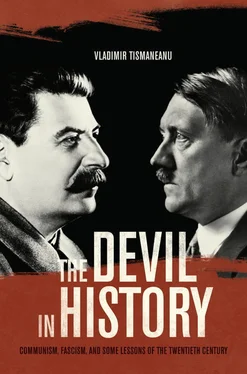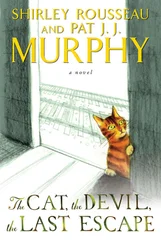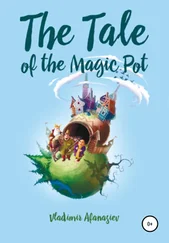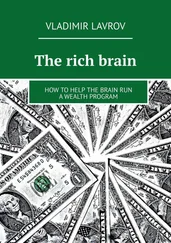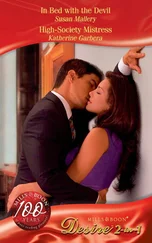To identify these texts in the Manifesto is not to imply that this is all that is there, but these are central texts, and they articulate what Marx maintained was most distinctive about “Communism” as a political formation distinct from the socialists and utopians that he disparages—that it unsentimentally, resolutely, and presciently both comprehends and apprehends the “real movement” of history, a movement heretofore marked by exploitation, expropriation, and violence, at the same time that it now, finally, stands at the threshold of a new dispensation. “In depicting the most general phases of the development of the proletariat,” Marx and Engels wrote, “we traced the more or less veiled civil war, raging within existing society, up to the point where that war breaks out into open revolution, and where the violent overthrow of the bourgeoisie lays the foundation for the sway of the proletariat.” 17
Marx did not articulate a “Leninist” theory of the “vanguard party.” Indeed, he insisted that “the Communists do not form a separate party opposed to other working-class parties.” But he also emphasized that the Communists alone possess a proper and historically privileged understanding of the total interests of the proletarians as a class:
They have no interests separate and apart from those of the proletariat as a whole. They do not set up any sectarian principles of their own by which to shape and mould the proletarian movement. The communists are distinguished from other working-class parties by this only: (1) In the national struggles of the proletarians of different countries, they point out and bring to the front the common interests of the entire proletariat, independently of all nationality. (2) In the various stages of development which the struggle of the working class against the bourgeoisie has to pass through, they always and everywhere represent the interests of the movement as a whole…. The theoretical conclusions of the Communists are in no way based on ideas or principles that have been invented or discovered, by these or that would-be universal reformers. They merely express, in general terms, actual relations springing from an existent class struggle, from a historical movement going on under our very ideas.” 18
For Marx, communism united ideological superiority, political militancy, and an unflinching and resolute appreciation of historical tasks. The distance separating Marx from Lenin on this score was barely perceptible. It is thus easy to see how Lenin later could claim that the Manifesto contained the idea of the dictatorship of the proletariat even though Marx and Engels had yet to name that idea. For Lenin, the book’s central theme was clearly “the proletariat organized as the ruling class.” Because political power was the organized power of one class or another, and because the state “is an organization of violence for the suppression of some class,” for Lenin it made perfect sense that the proletariat must seize state power and use it “to crush the resistance of the exploiters.” Such a politics, he insisted, was absolutely irreconcilable with Menshevik-style reformism. And there is more. For the “truth” of this perspective is only manifested by radicalized, uncompromising Communism. In her prescient critique of Lenin’s neo-Jacobin, potentially dictatorial organizational philosophy, Rosa Luxemburg wrote in 1904:
Ultracentralist tendency… the central Committee is the only active nucleus in the party and all the remaining organizations are merely tools for implementation… absolute blind submission of the individual organs of the party to their central authority… a central authority that alone thinks, acts, and decides for everyone. The lack of will and thought in a mass of flesh with many arms and legs moving mechanically to the baton…. Zombie-like obedience [kadavergehorsam] … absolute power and authority of a negative kind… sterile spirit of the night watchman… strict despotic centralism… the straight-jacket of a bureaucratic centralism that reduces the militant workers to a docile instrument of a committee… an all-knowing and ubiquitous Central Committee.” 19
And thus the foundation for a violent tutelary dictatorship was laid. Stalin would extend the premises put forward by the founder of Bolshevism, exalting party-mindedness (partiinost’) as an antidote to “bourgeois scientific neutrality” and other such illusions: “The omnipotence of the Lie was not due to Stalin’s wickedness, but was the only way of legitimizing a regime based on Leninist principles. The slogan constantly met with during Stalin’s dictatorship, ‘Stalin is the Lenin of our days,’ was thus entirely accurate.” 20Reviewing The Black Book of Communism , Anne Applebaum judiciously noted that “it is possible now, in a way it would not have been a few years ago, to trounce once and for all the myths of a more promising ‘early period’ of communist history, or of ‘better’ regimes which deviated from the general rule…. Without exception, the Leninist belief in the one party state was and is characteristic of every communist regime, from Russia to China to Cuba to Mozambique. Without exception, the Bolshevik use of violence was repeated in every communist revolution.” 21
The revolutionary subject refused to perform its allegedly predestined role. The proletariat, in this soteriological vision, was the universal redeemer or, as the young Marx put it, the messiah class of history. The concept of class struggle, as elaborated in the Manifesto , was foundational for the whole Marxian revolutionary cosmology. And as Raymond Aron, Alain Besançon, Robert Conquest, Leszek Kołakowski, and Andrzej Walicki have shown, in its emphasis on struggle, the Marxian project sanctified historical violence (a viewpoint unapologetically affirmed by a range of Marxist texts, from Leon Trotsky’s Their Morals and Ours to Maurice Merleau-Ponty’s Humanism and Terror). In the Marxian perspective, violence of the oppressed against the oppressors was justified as a means to smash the bourgeois state machine and ensure the irreversible triumph of the proletariat. Marx drew this conclusion from the defeat of the Paris Commune in 1871, which he attributed to the lack of determination on the side of the Communards to establish their own dictatorship of the proletariat. Later, Leninism used and abused this philosophy of revolutionary historical Aufhebung , celebrating the role of the vanguard party and deriding concerns about the absence of a mature proletariat in industrially underdeveloped Russia. For Lenin, the Bolshevik regime had to resort to any means, including mass terror, to “form a government which nobody will be able to overthrow.” 22In his 1972 address upon receiving the Nobel Prize for Literature, Aleksandr Solzhenitsyn stressed the upward spiral of degeneration involved in the Communist project: “At its birth violence acts openly and even with pride, [but later] it cannot continue to exist without a fog of lies, clothing them in falsehood.” 23
There are two trajectories laid out in the Communist Manifesto , foreshadowing further elaborations in mature Marxian theory. On one hand there is the emphasis on the self-development of class consciousness, which lends itself to a more or less social democratic politics of proletarian self-organization and political empowerment—what the American Socialist Michael Harrington called “the democratic essence.” On the other hand, there is the privileging of an ideologically correct vanguard committed to a totalizing revolution by any means necessary (for, in the words of Leon Trotsky’s famous aphorism, you can’t make an omelet without breaking some eggs). Yet even the more “humanistic” version of Marxism was deeply Manichean, centering on capitalist exploitation as the fundamental injustice and on proletarian counterhegemony as the agent of its transcendence. This dialectic of class struggle—what C. Wright Mills ironically called a “labor metaphysic”—is the core principle of all versions of Marxism. And its prominence explains why the more elitist and violent form of Marxism that came to dominate the politics of the twentieth century—Bolshevism—can be seen as a legitimate heir of Marxism’s emancipatory project, even if it is not the only legitimate heir. 24We can perhaps imagine other worlds in which a different realization of Marxian ideas might be possible. But in the real world of historical actuality, there was only one successful effort to “overthrow the bourgeoisie” and institute the “sway of the proletariat.” And it laid waste to the eastern half of Europe.
Читать дальше
